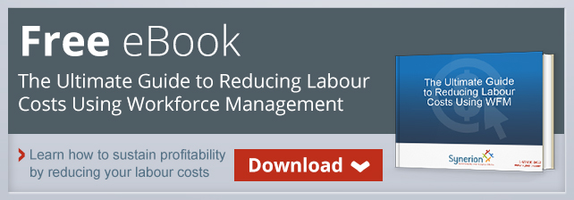
Growth is the goal of every business. Whether it's moving into a larger venue or taking your product global, creating a vibrant business that produces new products, services, sites, and jobs is the ultimate goal of a business owner. Determining the best way to grow your business takes a strategic plan and a solid understanding of how businesses grow. These 4 types of business growth can help you assess how to best expand your current business.
Organic Business Growth
Organic business growth is the most basic but most effective means of growth for a business. Organic growth focuses on producing more products, services, and space for business success. Businesses who are focusing on organic growth may buy a larger storefront or expand shifts to manufacture more product. Businesses focused on growing organically need to literally expand to accommodate their needs.
Organic growth is a solid business growth strategy for new businesses and also businesses who have tapped into a new market and face shortage of product. Additional space or production meet a growing need among consumers and prevent shortage. Organic business growth is an unsustainable growth strategy but one that ultimately sets a business up for future success.
Strategic Business Growth
Strategic business growth focuses on the long term growth of a business. Businesses who should focus on strategic growth have reached the epoch of their organic business growth stage and need to find additional markets. A strategic growth strategy may be to reach a previously untapped market through advertising or create additional products to add to inventory. Strategic business growth requires the money generated by organic growth because businesses won't experience that same the watershed business acceleration. Instead, it will be a gradual increase in sales.
Strategic growth is an essential stage for businesses that have plateaued. The strategic business growth strategy allows businesses to focus on long-term plans and use stored capital to attain those goals. Strategic growth is difficult for new businesses or businesses who are producing less product than is in demand. Ultimately, strategic business growth is a great strategy to tap when looking at long term business planning.
Partnership/Merger/Acquisition
For some businesses, acquiring, merging, or creating a partnership with another business can present some unique benefits and opportunities for market expansion. This strategy of business growth is the riskiest but also with the most potential success. A well laid merger or acquisition can help a business enter a new market, manufacture more product, and gain the customer loyalty cultivated by another brand.
Internal Business Growth
Internal business growth is both the easiest and hardest way to promote business growth. Rather than looking outward to production, this business growth strategy uses current resources and determines how they can be used better. Internal growth would include a business implementing lean systems or automated workforce management systems. This growth is often the hardest because rather than simply expanding into another market or trying to expand a product line, businesses must change how they conduct business, a process that can be scary to employees and managers.
In times between strategic and organic growth, internal business growth is a great way to maximize resources without a significant outlay of capital. In fact, internal growth should allow a business to continue production using less resources, recouping any costs spent maximizing processes. Internal business growth is a practical business growth strategy during any "lull" in outward growth.
Hoping isn't enough when attempting to expand a business. Cultivating a strong business growth strategy is essential and determining which strategy type would best help your business can prevent wasted time and money. Use these four strategies to implement the one that would work best for your business.

